If you ever happened to see Willie Mays live and in person, then consider yourself lucky. You were witness to perhaps the greatest all-around talent that the game of baseball has ever seen. There may have been ballplayers who hit more home runs, stole more bases or fielded center fielder with fewer errors. But you could make a pretty solid argument that no five-tool player was ever a five-tool player like Willie Mays.
The San Francisco Giants reported that Mays, 93, died peacefully on June 18 from heart failure while in a private care home in Palo Alto, CA. Last year, Major League Baseball announced that it was hosting a game at Rickwood Field, the historic Negro Leagues stadium in Birmingham, AL, and the entire event was essentially an homage to Mays. The stadium was Mays’ first home field, as he was a member of the Birmingham Black Barons as a teenager. Mays was sure to be a dominant presence during the broadcast. And it took place on June 20 — two days after his death. Although physically unable to attend, Mays had left the following statement:
I wish I could come out to Rickwood Field this week to be with you all and enjoy that field with my friends. Rickwood’s been a part of my life for all of my life. Since I was a kid. It was just ‘around the corner there’ from Fairfield [where Mays went to high school], and it felt like it had been there forever. Like a church. The first big thing I ever put my mind to was to play at Rickwood Field. It wasn’t a dream. It was something I was going to do. I was going to work hard to be one of the Birmingham Black Barons and play ball at Rickwood Field. That’s what I did. It was my start. My first job. You never forget that. Rickwood Field is where I played my first game, and playing there was IT — everything I wanted. I’d like to be there, but I don’t move as well as I used to. So I’m going to watch it from my home. But it will be good to see that. I’m glad that the Giants, Cardinals and MLB are doing this, letting everyone get to see pro ball at Rickwood Field. Good to remind people of all the great ball that has been played there, and all the players. All these years later and it is still there. So am I. How about that?”
Willie Howard Mays was born in Westfield, AL, on May 6, 1931. He came from a long line of athletes. According to his SABR biography, Mays’ grandfather was a semipro pitcher and his father, William “Cat” Mays, was a steel worker who played for a ballclub in the Tennessee Coal and Iron League. His mother, Anna, was a high school track star. Mays’ parents separated, and he stayed with his father and was raised by an aunt. The family moved to Fairfield, and Mays attended Fairfield Industrial High School. He lettered in football and basketball in 1949 and ’50, but the school didn’t have a baseball team, so Mays joined his father for the semipro Fairfield Gray Sox. From there, he played for the minor-league Chattanooga Choo-Choos in 1947.
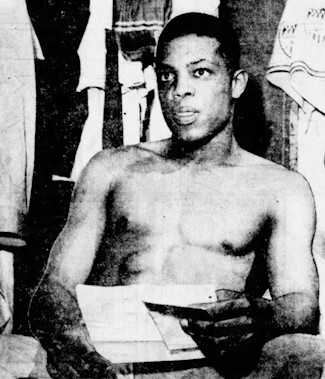
By 1948, the writing was on the wall for the Negro Leagues. Jackie Robinson had integrated the Brooklyn Dodgers, and Negro Leagues teams like the Black Barons, the Kansas City Monarchs and the Indianapolis Clowns became targets for raiding by the white-owned teams of Major League Baseball. But joining the Black Barons in 1948 was the first goal for Mays, as he noted in his final words. The team was led by player/manager Piper Davis and hitting phenom Artie Wilson. One of the pitchers, Bill Greason, is of this writing the oldest living Negro Leagues player at 99 years old. Mays joined the club shortly before July 4, 1948, and The Birmingham News reported that he “shows promise of being a topnotch player, too. He can field with the best of them and packs plenty of dynamite for a man of his size.”
Both Baseball Reference and MLB give Mays a .233/.313/.326 slash line in 13 games for the Barons in 1948. However, those statistics only include select games, where confirmable box scores and play-by-play details are available. He is credited with 10 hits, including a double against Satchel Paige in an infamous encounter that Bob Kendrick, Negro Leagues Baseball Museum CEO, relates here. But Mays did more than what his stat line indicates. On August 1, he had 3 of the 6 hits allowed by Monarchs starter Jim Lamarque in a 6-2 loss to the Monarchs. The young outfielder singled, doubled, tripled, stole a base and scored both of his team’s runs. On August 12, he had 2 hits and 2 walks in a win over the Cleveland Buckeyes. In a playoff series against Kansas City, Mays singled home the winning run in a 5-4 win in 11 innings and singled twice and doubled in the next day’s win. Birmingham defeated Kansas City and faced the Homestead Grays in the Negro World Series. The Grays won the series, but Mays brought Birmingham a win with a ninth-inning single for a 4-3 win on September 30. By the end of the season, Davis was awarded the Negro American League’s Manager of the Year, and Mays was the Rookie of the Year. All in all, his rookie season was much more than those 13 games, even if the official records will never show it.
Mays continued to star in the outfield for the Black Barons in 1949 and ’50, though those seasons are not considered to be a part of the major-league record. But a summary provided by The St. Louis Argus on June 30, 1950, credits Mays with a .311 batting average, 17 doubles, 4 triples and 5 home runs in 1949. He drove in 40 runs and stole 11 bases and was fourth among outfielders in assists. Up until May 25, he only played Birmingham’s home games because he was still attending high school! By 1950, MLB teams were sending their scouts to get a look at the young phenom. In 22 games with Birmingham in 1950, Mays hit .318, and by the end of June, he had signed with the New York Giants. The Alabama Citizen reported that the purchase price of $15,000 was a record for a Negro Leagues ballplayer, and $9,000 of it went to the Barons, with Mays getting the rest.
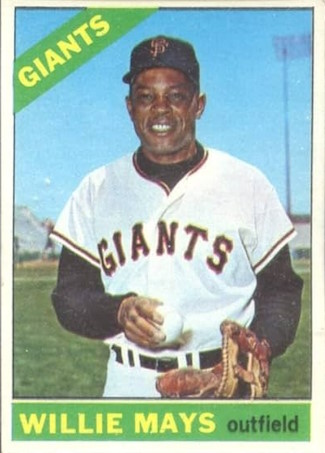
If a different team had been successful, Mays could have ended up as teammates with Henry Aaron, though they would not be sharing an outfield. Bill Maughn, a scout for the Boston Braves, was sure of Mays’ talent, but the team wanted to convert him to a pitcher. In the end, the Braves didn’t want to pony up the money it would have taken to sign him. “After the Braves cooled off on Willie Mays, Ed Montague, New York scout, heard Maughn say Mays was the finest prospect he had seen in years,” reported the Birmingham News. “While the other scouts were trying to make up their minds, Montague slipped into Tuscaloosa where the Black Barons were playing an exhibition game and signed Mays.”
Mays was assigned to Trenton of the Class-B Interstate League and hit .353 in 81 games, with 4 home runs and 55 RBIs. He moved up to the Minneapolis Millers in 1951 and stayed there for all of 35 games. In a little over a month’s worth of games, he had 71 hits for a .477 batting average, with 18 doubles and 8 home runs. By the end of May, Giants president Horace Stoneham could delay it no further — he brought Willie Mays to the majors.
Mays’ introduction to the National League was notoriously difficult. In his first 7 games, he had just one hit — a solo homer hit off Boston Braves ace Warren Spahn on May 28. Giants manager Leo Durocher had faith in the rookie and kept him in the lineup as the starting center fielder. His faith was quickly justified. After batting .048 in the month of May, Mays hit .348 in June, with 6 home runs and 26 RBIs. He was on his way. He finished the year with a .274 batting average, 20 homers and 68 RBIs and was a runaway pick for the NL Rookie of the Year. With Mays in the lineup, the Giants went 81-40 and took the National League pennant with a total of 98 wins. The Giants lost to the New York Yankees in the World Series, and Mays’ first postseason was a bit of a disappointment. He hit .182 with 4 singles in 6 games and grounded into three double plays in Game Four. Mays’ sophomore season ended shortly after it started. In his first 34 games, he batted .236, and he was called off to serve in the Army at the end of May. He missed the rest of 1952 and all of ’53.
“We’re going to miss ‘Say-Hey’ Willie a lot, more than most people realize,” said Durocher. “That kid is the greatest young ballplayer I have ever seen. Bar none. He is the only one that I know of who has a chance to be as great as Joe DiMaggio. Willie has the five essentials to be a truly great player. He can run, he has a great arm, he is a tremendous outfielder, he is a good hitter and he has lots of power.”
Mays returned to the Giants in 1954 and kicked off one of the greatest sustained periods of greatness that any ballplayer has ever had. From 1954 to 1968, he averaged 153 games a season and slashed .311/.386/.586. He averaged 38 home runs and 104 RBIs. He had a .972 OPS and a 163 OPS+ during that 15-year span, and he was a part of every All-Star team, including the four-year stretch where there were two All-Star Games. He also won two MVP Awards, was a Top Five candidate in seven other seasons, and won 12 Gold Glove Awards.
In Mays first season after nearly two years of military service, he won his only batting title and slashed .345/.411/.667. He also led the NL in slugging and triples with 13, and his 41 homers were third-best. His greatest accomplishment that season took place in the World Series, where his famed catch of Vic Wertz’s long fly ball remains the stuff of legend, nearly 70 years later. The catch happened in Game One, but it set the tone for the Giants’ four-game sweep over Cleveland to bring Mays his only championship ring. “I just can’t hit a ball any harder than that,” Wertz said after the game. “I couldn’t believe any man would ever haul it down.” “I made two better catches and both of ’em were this season,” Mays said modestly, referring to catches he made against Pittsburgh’s Bob Skinner and Cincinnati’s Gus Bell.
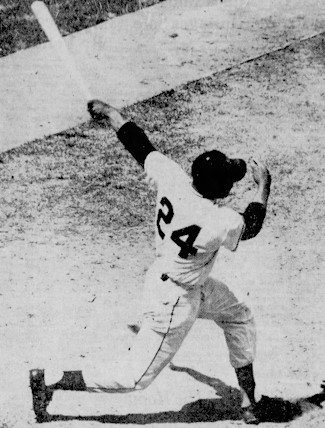
By the end of the year — after the Giants had clinched the World Series, and after Mays had won his first NL Most Valuable Player Award — sportswriters were beginning to write about Mays as a sure-fire legend in the making — after one full season. It was more than just his impressive statistics; it was the superstar aura. As sportswriter Jimmy Cannon put it, “[Duke] Snider is marvelous but he isn’t Willie Mays. They can hit for the same average and drive in the same amount of runs and make the exact catches. They could do it all without an inch separating them but Mays would stand by himself. There is in Willie Mays a quality no one can create. I don’t know what it is, but Willie Mays has it. It is enough to know it is there and to appreciate it. Not even Willie Mays can define it.”
Every succeeding year, Mays seemed to show off a different tool in his skillset. His batting average dipped to .319 in 1955, but he slammed 51 home runs — tops in all of baseball — and drove in 127. In 1956, he batted .296 and homered 36 times, but he led all of baseball with 40 stolen bases — the first of four straight seasons he was the NL stolen base champ. That same year, he hit a pinch-hit 2-run home run off Whitey Ford in the All-Star Game, helping the NL to a 7-3 win. In fact, there wasn’t a single season between 1954 and 1962 that Mays didn’t lead the National League in at least one major offensive category.
After the ’57 season, the Giants made preparations for the team’s move to San Francisco. Mays had some trouble at the onset, as his attempts to buy a home in a non-segregated neighborhood fell through when the homeowner refused to sell to him. As the Star-Tribune reported, San Francisco Mayor George Christopher invited Mays and his family to stay with him until the housing situation could be straightened out. Other groups got involved, and the seller changed his mind and made the sale. “Most Americans will be glad that the story has this happy ending,” noted the Tribune’s editorial page. “But some of them will suspect that, if Mays had not been a baseball celebrity, he might have had a tougher time. Suppose Willie Mays had been a relatively obscure professional man. Suppose he had been a Negro with an advanced degree in physics who wanted his family to live in a first-class neighborhood. Would the results have been the same?” One writer to The Daily Herald noted, “It is a sad commentary too on race relations in the North and West which are supposedly more amicable than in the South. Willie Mays himself remarked that the hidden, insidious manifestations of race prejudice in the North are far more wounding to a man’s honor and dignity than the open practices of the South.”
In his first season in San Francisco in 1958, Mays reached a career high with a .347 batting average, hit 33 doubles, 11 triples and 29 home runs. He spent most of the season battling Stan Musial for the NL batting title but was ultimately edged out by Richie Ashburn, who hit .350. Mays reached base at a .419 clip and slugged .582 for a league-leading 1.002 OPS and 165 OPS+. It was the only season of his career where he topped 200 hits, with 208. Sportswriters, though, spent more time on his supposed slumps (when his batting average fell from the .400s to the .320s) or reporting on divorce rumors from his wife Marghuerite. The two married in 1956, adopted a son Michael and would later divorce in 1963.
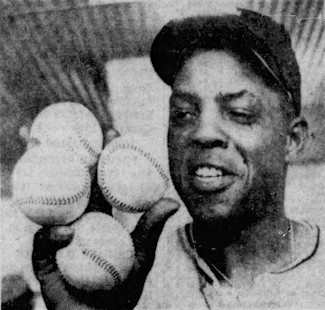
homering four times against the Milwaukee
Braves. Source: The Capital Times, May 1, 1961.
Despite what some sportswriters saw when they looked at him, Mays remained a perennial MVP candidate every season in San Francisco. He also was a regular at the All-Star Game when it was at its competitive peak. In the July 8, 1959, game, he slammed a 438-foot triple off Whitey Ford that scored the tying and go-ahead runs in a 5-4 NL win. In the two All-Star Games in 1960, Mays was a combined 6-for-8 with a double, triple and home run (off Ford, again). He was named the All-Star Game MVP in 1963 and 1968. In ’63, Mays drove in 2 runs with a single and RBI groundout, stole 2 bases and scored the final run of the 5-3 NL win in a Ron Santo single. In 1968, Mays singled in the first inning and scored the only run of the contest on a Willie McCovey double play. Mays was named to 24 All-Star Teams, played in 20 of the games, and hit .307 with 3 home runs.
The Giants moved into Candlestick Park in 1960, and Mays slashed .319/.381/.555 with 103 RBIs. He led baseball with 190 hits that included 29 doubles, 12 triples and 29 homers. The park was larger than Seals Stadium, which Giants manager Bill Rigney anticipated would let Mays’ fielding skills shine. “I like parks with short fences, man,” Mays joked. “Put that in the paper. I get paid to hit. They don’t pay me for fielding. I wish they did. I’d be willing just to run down these fellows’ mistakes,” he added, teasing the Giants pitchers. Candlestick and its frequent gusts of wind didn’t pose too much of a challenge to Mays. He hit 40 homers in 1961 (including 4 in a game against the Milwaukee Braves on April 30) and a league-leading 49 in 1962, 28 of which came at Candlestick. Mays finished second in the MVP voting that year, losing out to Maury Wills and his 104 stolen bases. And with all due respect to Wills and his abilities, it’s one of the worst voting decisions in MVP history. Mays slashed .304/.384/.615 to Wills’ .299/.347/.373, and he drove in 93 more runs than Wills did.
Some Giants fans still hadn’t warmed up to Mays. “They seemed to expect me to hit a home run every time I came to bat,” he said in a Newsday interview in 1964. “Baseball’s not made that way. Sure, I get paid to hit — but the other guys get paid to get me out.” Syndicated columnist Jim Murray noted, “The only place in the world they boo him is San Francisco,” which he likened to kicking a stained glass window. While Mays was quick to smile and joke with his teammates, he also operated under constant stress. He frequently traveled alone and ate his dinners in his hotel room to escape crowds and the media. He was divorced and missed his son. After one game, the outfielder collapsed in the Giants dugout from nervous exhaustion. “I try to make him laugh at least once a day,” said Giants coach Larry Jansen. “But it isn’t too easy. He’s so tense.”
After several seasons in the MVP Top 5, Mays won his second MVP Award in 1965. He slashed .317/.398/.645, leading baseball in on-base and slugging percentage. He homered 52 times, a career high, drove in 112 runs, and had a career-best OPS+ of 185, marking ’65 as quite possibly the best of Mays’ stellar career. It was Mays’ age 34 season, and while he had defied slowing down from age to that point in his career, he couldn’t do it forever. Mays never topped .300 again after 1965. In 1966, he reached 30 home runs (37) and 100 RBIs (103) for the last time. It was an offensive slide that even Mays could not escape, but it was one of the more graceful offensive slides in recent memory. Mays kept being nominated to the All-Star Games until 1972, and it was only that last year where you could argue it was more of a sentimental than logical choice. After his batting average dipped to .263 in 1967, he hit .289 in ’68. His homers fell to 13 in 1969, but then he homered 28 times in ’70. He hit his 514th career home run off Pittsburgh’s Al McBean on May 11, 1966, leaving him within 200 of Babe Ruth’s record. But #600 didn’t come until the very end of the 1969 season off San Diego’s Mike Corkins, and Ruth’s supporters were able to breathe easy for an extra year or two.
The 1971 Giants finished first in the NL West with 90 wins. Mays batted .271 in the regular season but drew 112 walks to lead the NL with a .425 on-base percentage. He hit just 18 homers during the season but connected in a Game Two loss off Pittsburgh’s Bob Miller for his only career postseason home run. Mays turned 41 in 1972 and fell to earth, hard. He hit .146 in the month of April and had raised his average to just .184 on May 11 when the unthinkable happened: The Giants traded Mays to the New York Mets for pitcher Charlie Williams and $50,000 cash. Mays was returning to New York City to end his career where it started. “The people on the Mets have done something for me that really didn’t have to do,” Mays said. “I feel very proud to be back in New York.” Meanwhile, in San Francisco, Examiner writer Bucky Walters grumbled that all the Giants could get was Williams. “It would have been possible for the Giants to have got several established players for Mays a couple of years back when his market value was still high.”

Mays wasn’t completely out of gas, though he was no longer an everyday player and didn’t play center field with the same effortless grace that he once did. As a part time outfielder/first baseman, Mays hit .267 for the Mets in 69 games with 8 home runs, and then he batted .211 in 1973 with 6 homers in 66 games. The ’73 Mets won 82 games, which was enough to finish first in the NL East. The team beat the Cincinnati Reds in the NLCS in 5 games before losing the World Series in 7 games to the Oakland A’s. Mays played in 1 game in the NLCS and had a run-scoring infield hit. He then played in 3 games in the World Series and had 3 hits and 2 RBIs in what ended up being his final major-league games.
Willie Mays played for a total of 23 professional seasons, including his 1948 season in Birmingham. He had a .301/.384/.557 slash line, with 525 doubles, 141 triples and 660 home runs in his 3,293 hits. Mays stole 339 bases and was caught 103 times. He scored 2,068 runs and drove in 1,909 runs. His career offensive WAR (per Baseball Reference) of 136.4 is fourth all-time, and his 18.2 defensive WAR is 69th. He is one of only 10 players to play in more than 3,000 games (3,005), and he is 13th all-time in hits and 6th in home runs.
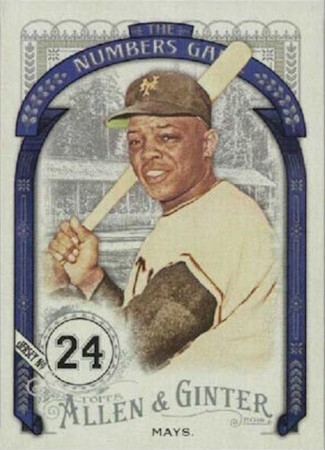
Post-playing career, Mays spent several years as a batting instructor for the Mets. He was inducted into the Hall of Fame in 1979 with 94.7% of the votes — no idea what 5.3% of the voters were thinking. That same year, he left the Mets for a job as a greeter at a Bally’s casino in New Jersey. For getting involved in gambling, Mays and Mickey Mantle were both banned from the game by Commissioner Bowie Kuhn — they were later reinstated. Mays also made his peace with the San Francisco Giants, particularly when his godson Barry Bonds signed there and began demolishing baseball’s greatest home run records. The Giants honored him regularly, including his 90th birthday in 2021. If Mays didn’t receive enough love from Giants fans during his playing days, he was adored by them over the final decades of his life. He was married to his second wife, Mae, until her death in 2013. His only son, Mike, attended the Rickwood Field game to help honor his father.
Mays’ health began to decline as well, and his public appearances became fewer. He suffered from vision problems and was largely confined to a wheelchair in his last years. His final statement was already listed above, so I would like to leave Willie with a quote from 1977 that ran in the Nevada State Journal, when he was asked about his greatest thrill in baseball — the Catch? The 4 home runs in a game? The 660 home runs?
“The biggest thrill I got out of baseball was providing excitement and entertainment for the fans who came out to see me,” Mays said. “I’ve always tried to be very conscious of what it means to be Willie Mays. When people meet me, I want them to remember the experience as a positive one. It isn’t always easy, and I can’t meet everyone who’d like to shake my hand. But if people, especially young people, are going to look up to a Willie Mays, Willie Mays ought to be the type of person they should look up to. Athletes have tremendous power in this country. They should use that power to do good.”
Follow me on Instagram: @rip_mlb
Follow me on Facebook: ripbaseball
Follow me on Bluesky: @ripmlb
Follow me on Threads: @rip_mlb
Follow me on X: @rip_mlb
Support RIP Baseball




I still don’t understand the baseball writers who refuse to vote in a player in their first year of eligibility when he should be 100% unanimous selection. Great article Sam.
LikeLike